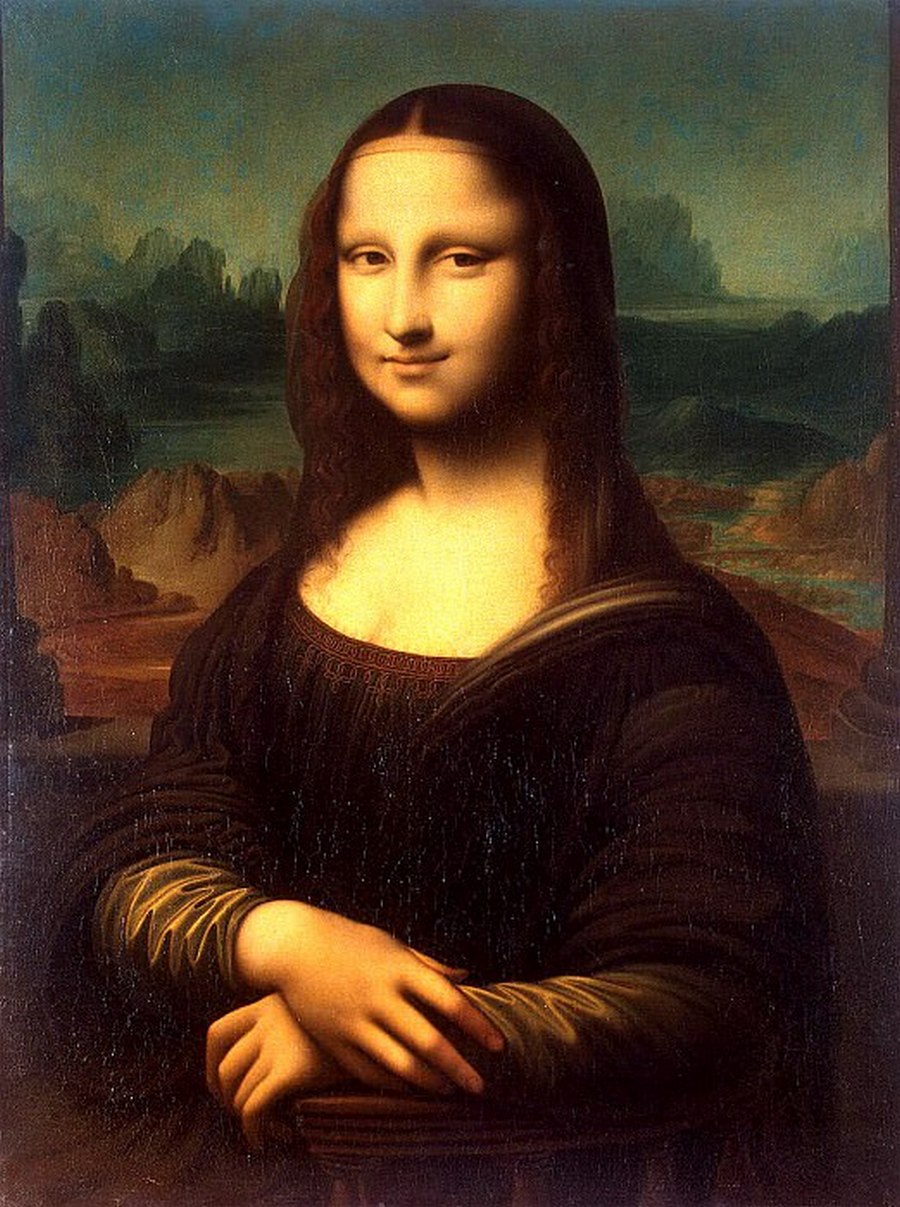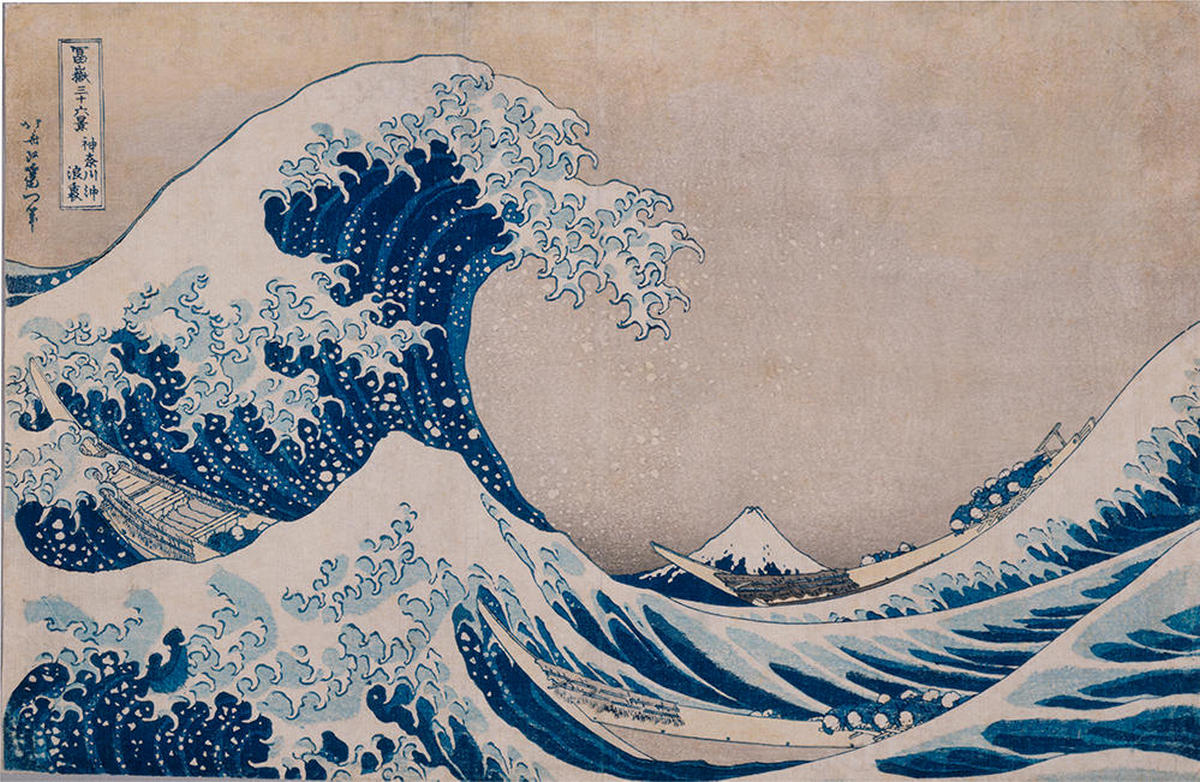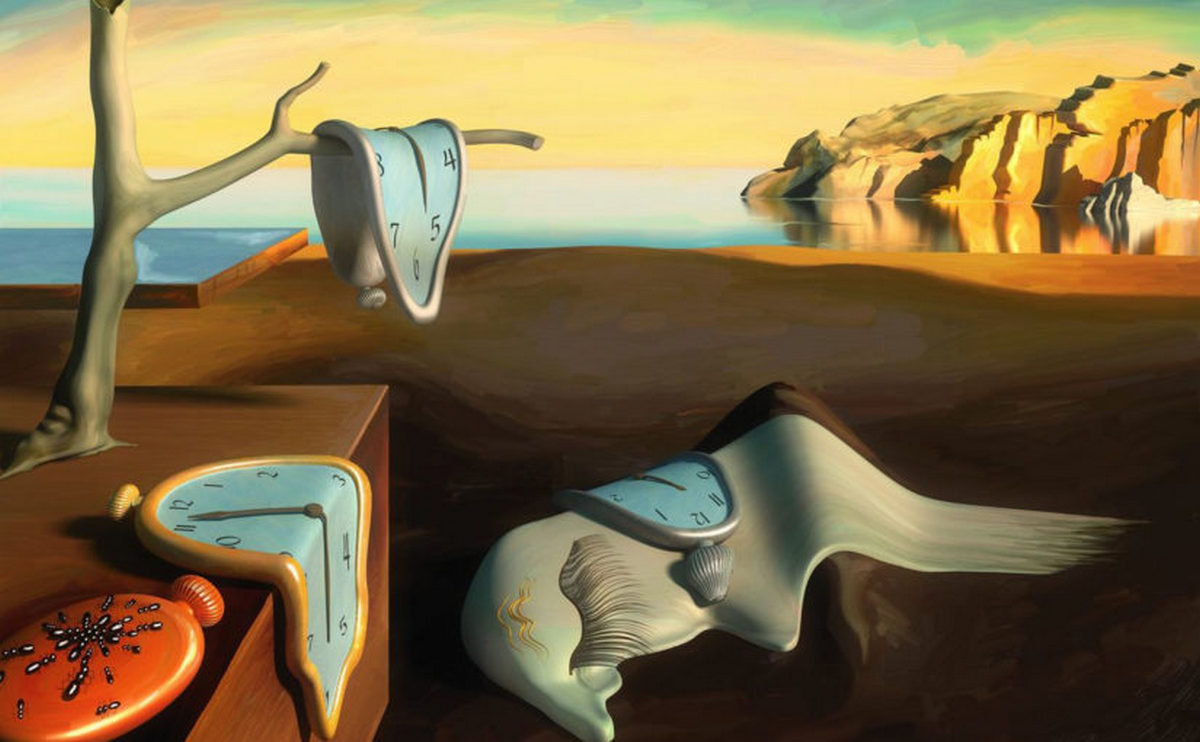

The history of fine art knows many paintings honored to be called masterpieces. They are exhibited in museums, carefully studied, and sold at auctions for hundreds of millions of dollars. But only some of them manage to acquire a remarkable influence on culture and become a symbol of the era in the minds of many generations. The popularity of such masterpieces goes beyond the narrow circles of art history experts and actively conquers the space of mass culture. You can see references to them in films, performances, works of art, architecture, memes, and just on the street.
Leonardo Da Vinci, "The Last Supper" (1495-1498)
The famous painting of the genius Italian Renaissance artist is dedicated to the last meal of Jesus Christ. According to researchers, the author depicted the moment after the words about the future betrayal of Judas Iscariot. For centuries, the painting was repeatedly copied and placed in monastery refectories. A new surge in the artwork's popularity was observed in the mid-noughties thanks to Dan Brown's book "The Da Vinci Code." In it, the painting became the object of close attention from the seekers of secret knowledge about the events of two thousand years ago. The reference to the plot of Da Vinci's work is often used when it comes to the circle of relatives or discussion of some mystery inaccessible to the uninitiated. The painting can be seen on the wall of the Dominican monastery of Santa Maria Delle Grazie in Milan.
Leonardo Da Vinci, "Mona Lisa" (1503-1505)
One of the most mysterious portraits in the history of fine art. At least ten versions explain who Leonardo depicted, but none of them is supported by convincing evidence.

"Mona Lisa" Leonardo Da Vinci. Photos © gallerix.ru
There are still many assumptions about the enigmatic smile and personality of the woman depicted on the canvas. In their masterpieces, references to the artwork were made by Kazimir Malevich, Marcel Duchamp, Fernand Leger, Salvador Dali, René Magritte, Robert Rauschenberg, Andy Warhol, and others. The painting reached its peak of popularity in the age of information technology when it managed to become the most famous work of fine art.Leonardo Da Vinci, "Vitruvian Man" (1492)
The artist made the image of a man in his diary. It got its name thanks to the work of the ancient architect Vitruvius, who was looking for the ideal proportions for architectural structures by studying the proportions of the human body. The Vitruvian man is indirectly related to the mathematical solutions described in the era of Antiquity. Probably, Leonardo himself just used the general idea for his searches, in practice, not following the provisions of Vitruvius' theory. The drawing became a symbol of various examinations in the field of mathematics, focused on the proportions of the human body. After the actualization of the problem of environmental protection, it became an artistic embodiment of the idea of harmony between man and nature. In 2011, John Quigley depicted a replica of the Vitruvian Man on melting glaciers in the Arctic Ocean to draw attention to the problem of global warming.
Michelangelo Buonarroti, "The Creation of Adam" (1511-1512)
The fresco on the ceiling of the Sistine Chapel is dedicated to the moment of creation of the first man: among the angels, God touches Adam with his finger. The work is considered one of the most popular in popular culture. References to the fragment with the touch of fingers can often be seen on advertising banners, paintings, films, and works of art. For example, in episode 10 of season 1 of the TV series "Wild West World," Dr. Ford says that Leonardo left an encrypted message on the fresco, according to which consciousness is not a gift of divine powers but is the result of our brain activity. As proof, he repeats the outline of the field depicting God and angels with his finger in the air, indicating its similarity to the shape of the brain. Today, the fresco's plot is considered the most successful metaphor for the mystery of human emergence.
Pieter Brueghel the Elder, "Tower of Babel" (1563)
The painting by the Dutch painter was an attempt at artistic comprehension of the biblical story of pandemonium. According to the Scripture, in ancient times, people wanted to become like the gods and for this purpose began the construction of a tower aimed at the sky. As a punishment for their pride, God confused the builders' languages so they could not complete their audacious plan. Since then, the tower of Babel has become a symbol of the futility of human hopes for unauthorized deification. Pieter Bruegel the Elder created the fascinating image of this myth, which lives in the mass consciousness of humanity in our time. A very original reference to Brueghel's version of the Tower of Babel (authentic ziggurats had rectangular foundations) can be seen in the architecture of the European Parliament building in Strasbourg. In the facade, you can see the characteristic hole depicted in the painting by the Dutch painter. There are two versions of the painting (Vienna and Rotterdam), painted in the same year.
Caspar David Friedrich, "Traveler over the Sea of Fog" (1818)
Caspar's painting defines the aesthetic concept of romanticism in the language of artistic forms. The canvas of the romantic artist depicts a traditional plot for his work: in the face of fascinating nature, an unknown hero stands, contemplating the abyss of inner experiences. Classic for all romantics theme of inner struggle and focus on spiritual existence here acquires an original artistic understanding. Spectacular images on the canvas convey to the viewer the impulses of internal tension of the hero of the story and involve him in his vision of the world. References to the work can be seen in films, books, and popular culture. For example, in the fantasy film "Espen in the Kingdom of Trolls" (2017), there is an episode where the main character, standing with his back to the viewer, enjoys the magnificent beauty of the Norwegian mountains.
Katsushika Hokusai, "Great Wave in Kanagawa" (1823-1831)
Wood engraving depicting the sacred for all Japanese Mount Fujiyama became a kind of bridge between the fine arts of the West and the East. The plot, traditional for Eastern art, is combined with the European technique of perspective and the use of the pigment Prussian blue.

"Wave in Kanagawa" Katsushika Hokusai. Photos © ar.culture.ru
Japanese prints attracted the attention of European artists, filmmakers, and musicians. The image of a large wave against the background of Mount Fuji can be seen in the collections of Vincent van Gogh, Auguste Renoir, Camille Pissarro, and other famous masters. The painting was also used as a cover for the score "The Sea" by French composer Claude Debussy. There are references to the artwork in the cycle "36 Views of the Eiffel Tower" and the engraving "Wave hitting the rock and falling in an arch" by Henri Riviere.Eugene Delacroix "Freedom leading the people" (1830)
Delacroix's work influenced the tradition of aesthetic understanding of the image of revolution, revolutionary activity, and freedom. The image of a woman created by Delacroix combines the features of an ancient goddess and an austere revolutionary from the people. The painting depicts a woman named Marianne with bare breasts and the flag of the French Republic. She is even considered the personification of the motto "Liberty, Equality, Fraternity," sacred to all French people in modern France. Later, fragments of the painting could be seen on French francs along with the portrait of its author. Not without reason, researchers suggest that the image of Marianne was used to develop the project of the Statue of Liberty, presented to the Americans.
Vincent Van Gogh, "Sunflowers" (1888)
The common name for two cycles of paintings. Love for sunflowers prompted the master to pay special attention to their work. While working on the paintings, the master used the impasto technique, using a palette knife instead of traditional brushes. This unusual solution gave the image a unique texture and relief. Still, life became a kind of artist's brand, as recognizable in the circles of art experts as "Mona Lisa" by Da Vinci or "The Creation of Adam" by Michelangelo. Despite the cruel fate of the master and the variety of paintings with a very extravagant provenance, " Sunflowers " became the most famous work.
Vincent Van Gogh, "Starry Night" (1889)
The cityscape of the famous Dutch post-impressionist artist was painted in an improvised hospital studio after an incident with a severed left earlobe in just one day. The original manner of depicting the night sky became the highlight of the work. There is an assumption that the particular mental states observed in the artist during his life opened the opportunity to see the world in such an unusual light. The artistic techniques of post-impressionism became a symbol of freedom and renewal of European art at the turn of the XIX-XX centuries.
Edvard Munch, "The Scream" (1893)
A common name for a series of paintings by the Norwegian artist with a similar plot. There are different interpretations of the master's creative idea: some see on the canvas the human reaction to the impending danger from the blood-red sky over the Scandinavian fjord, and others - the horror of a man who realized his loneliness in a hostile world. The non-trivial plot of the painting acquired a new interpretation in the second half of the twentieth century. After two world wars, the Spanish flu epidemic, and other cataclysms, Munch's prophecy finds an entirely different, gloomy interpretation. It is believed that the author's artistic flair told him in what state a person of the late Modern era would be.
Salvador Dali, "Permanence of Memory" (1931)
A small work of the master is destined to become the most famous of his paintings. The surrealistic plot in a symbolic form hints to the viewer at the fallacy of ideas about time as a straight line.

"Permanence of Memory" Salvador Dali. Photos © drinkanddraw.by
The appearance of the blurring clock evokes a sense of transience, an imaginary projection of the world in our minds. Their visual similarity to cheese creates a "lamp" association with the plots of children's fairy tales and fantasies. References to the artistic image created by Dali can be seen in cartoons and books devoted to mysticism.Grant Wood, "American Gothic" (1930)
The portrait of average rural Americans in the first half of the twentieth century was very ambiguously perceived by contemporaries. For example, at the Art Institute of Chicago, the work was recognized as a humorous valentine, and the residents of Iowa were outraged and even threatened the author with reprisal. The image created by Wood became one of the most famous in the American culture of the mid-twentieth century. During the Great Depression, critics began to interpret the painting positively as a symbol of the indomitable spirit of American pioneers.
René Magritte, "Son of Man" (1964)
The painting by the Belgian surrealist was painted as a self-portrait, but later the range of options for its interpretation was expanded. The man on the canvas is a collective image of modern ideas about a successful life. The man on Magritte's canvas is a human son of our time. His face is covered with a green apple, which on the one hand, reminds him of his connection with the biblical Adam, and on the other - of conventionality. The strict black suit and cauldron can be regularly seen on posters, films, and other works.
Andy Warhol, "Marilyn Diptych" (1962)
The famous silkscreen by the king of pop art was created after the death of the American actress Marilyn Monroe. In the first part of the diptych, copies of the photograph are printed in bright colors, symbolizing the flowering of strength, life, and the path to fame. The second part of the work is made in black and white with the gradual dissolution and disappearance of the image of the actress. Using a relatively simple technique, the author demonstrated the full circle of life and created one of the works dedicated to the charming blonde from Hollywood.
The art critic of KyivGallery
